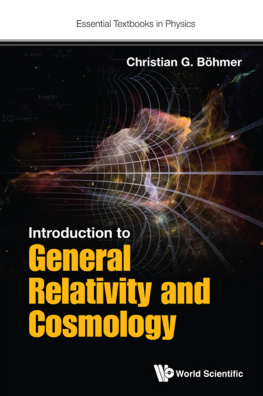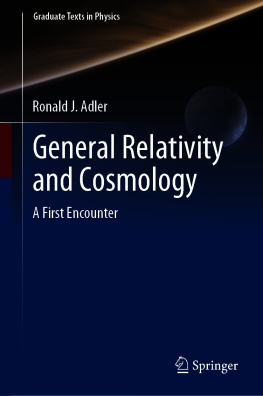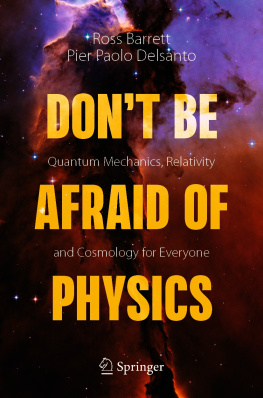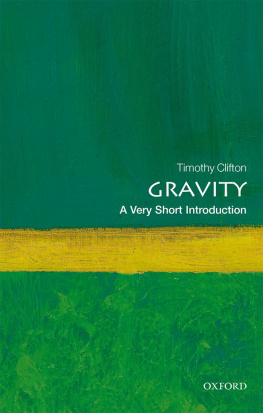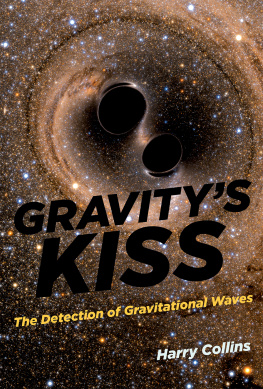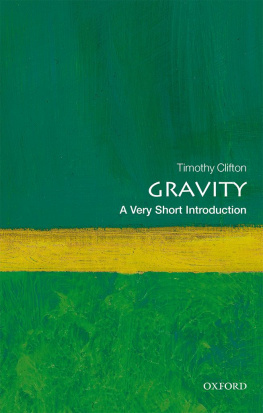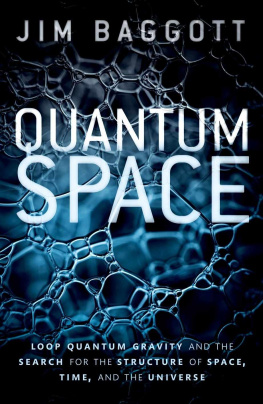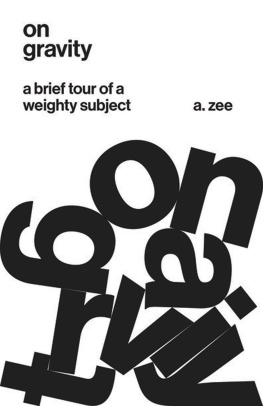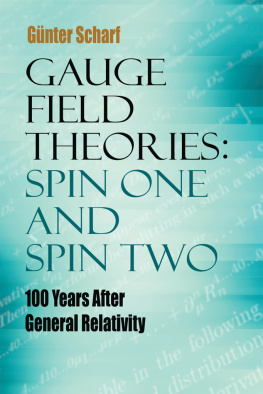

Published by
World Scientific Publishing Co. Pte. Ltd.
5 Toh Tuck Link, Singapore 596224
USA office: 27 Warren Street, Suite 401-402, Hackensack, NJ 07601
UK office: 57 Shelton Street, Covent Garden, London WC2H 9HE
Library of Congress Cataloging-in-Publication Data
Names: Ni, Wei-Tou, 1944 editor.
Title: One hundred years of general relativity : from genesis and empirical
foundations to gravitational waves, cosmology and quantum gravity /
editor, Wei-Tou Ni, National Tsing Hua University, Hsinchu.
Description: Singapore ; Hackensack, NJ : World Scientific, [2015] | Includes
bibliographical references.
Identifiers: LCCN 2015032705| ISBN 9789814635127 (set : alk. paper) |
ISBN 981463512X (set : alk. paper) | ISBN 9789814678483 (v.1 : alk. paper) |
ISBN 9814678481 (v.1 : alk. paper) | ISBN 9789814678490 (v.2 : alk. paper) |
ISBN 981467849X (v.2 : alk. paper)
Subjects: LCSH: General relativity (Physics)--History. | Gravitational waves. |
Cosmology. | Quantum gravity.
Classification: LCC QC173.6 .O54 2015 | DDC 530.11--dc23
LC record available at http://lccn.loc.gov/2015032705
British Library Cataloguing-in-Publication Data
A catalogue record for this book is available from the British Library.
The cover figure is adapted from a figure by David J. Champion (MPI for Radioastronomy).
The articles in this two-volume set were previously published in various issues of
International Journal of Modern Physics D.
Copyright 2017 by the Editor
This is an Open Access book published by World Scientific Publishing Company. It is distributed under the terms of the Creative Commons Attribution-Non Commercial 4.0 (CC BY-NC) License. Further distribution of this work is permitted, provided the original work is properly cited.
Desk Editor: Ng Kah Fee
Typeset by Stallion Press
Email:
Printed in Singapore
Foreword
General Relativity (GR) is founded on the observation of Mercury perihelion precession anomaly discovered by Le Verrier and improved by Newcomb, the MichelsonMorley experiment, and the precision Etvs experiment. Its theoretical basis is based on Special Relativity (previously called the restricted theory of relativity), Einstein Equivalence Principle (EEP) and the realization that the metric is the dynamical quantity of gravity together with the Principle of General Covariance and the absence of other dynamical quantities. The establishment of GR in 1915 is a community effort with Albert Einstein clearly playing the dominant role. For one hundred years, its applicability through solar system to cosmology is prevailing. If one includes the cosmological constant (proposed in 1917 by Einstein) in GR, there have not been any fully established non-applicable places. The only possible potential exception is the missing mass (dark matter)-deficient acceleration issue. Dark energy and quantum gravity are needed in the present theoretical foundation of physics; however, more experimental clues are needed. The framework applicability of GR is already demonstrated in theoretical inflation models with quantum fluctuations leading to structure formation with experimentally observed spectrum.
To celebrate the GR centennial, we solicit the writing of 23 chapters in these two volumes consisting of five parts:
| Part I. | Genesis, Solutions and Energy. |
| Part II. | Empirical Foundations. |
| Part III. | Gravitational Waves. |
| Part IV. | Cosmology. |
| Part V. | Quantum Gravity. |
Volume 1 consists of Part I, Part II and Part III; Volume 2 consists of Part IV and Part V.
In Part I, Valerie Messager and Christophe Letellier start in Chapter 1 with a genesis of special relativity to set the stage. They rely on the original literature to make the development clear and connected. Thanks to many thorough researches in the last 50 years, the path to general relativity is clear. A concise exposition of the path is presented in Chapter 2. In Chapter 3, Christian Heinicke and Friedrich Hehl present the historical development and detailed properties of the basic and fundamental spherical Schwarzschild and axisymmetric Kerr solutions. In Chapter 4, Chiang-Mei Chen, James Nester and Roh-Sung Tung expound the important and useful concept of energy with its many facets and various applications.
In Part II, the empirical foundations of GR are examined. First, the cornerstone Einstein Equivalence Principle (EEP) is explored. Ever since about 100 ps (the time of electroweak phase transition or the equivalent/substitute) at the quasi-equilibrium Higgs/intermediate boson energy scale from the Big Bang (or equivalent/substitute), photons and charged particles are abundant. With the premetric formulation of electrodynamics, we examine the tests of EEP via the metric-induced spacetime constitutive tensor density. The non-birefringence of the cosmic electromagnetic wave propagation in spacetime is observed to ultrahigh precision. This constrains the spacetime constitutive tensor density to MaxwellLorentz (metric) form plus a scalar (dilaton) degree of freedom and a pseudoscalar (axion) degree of freedom to high precision. The accurate agreement of cosmic microwave background spectrum with the Planck spectrum constrains the fractional change of the cosmic dilaton to be less than 8 104. The Galileo weak equivalence principle (WEP) experiments (Etvs-type experiments) constrain the fractional dilatonic change in the solar system to be less than 1010. Accompanying the axion degree of freedom is the rotation of linear polarization in the cosmic propagation of electromagnetic waves called cosmic polarization rotation (CPR). Sperello di Serego Alighieri reviews the constraints from radio galaxy observations and CMB polarization observations to give a general constraint of 0.02 rad for the mean (uniform) CPR and also a constraint of 0.02 rad for the CPR fluctuations. In many inflation models dilatons and axions play important roles; these investigations are crucial to give clues or constraints on the models. Frequency and time are the most precise metrological quantities. Their uses in gravity experiments are unavoidable. The use of GR in time synchronization and in GPS, GLONNESS, Galileo and Beidou becomes a folk talk. There are two good ways to compare precision clocks: (i) fiber links; (ii) space optical links using laser ranging. tienne Samain expounds the space optical link approach and addresses the laser ranging missions T2L2 (Time transfer by Laser link), LRO (Lunar Reconnaissance Orbiter) and LTT (Laser Time Transfer) together with future space mission proposals for fundamental physics, solar system science/navigation in which laser links are of prime importance. Solarsystem observation provides the original impetus and the first confirmation of GR. Chapter 8 summarizes the progress of classical solar system tests and explores its potential in the future. Improvement of three or more orders of magnitude is still possible.
Perhaps the most dramatic development in testing relativistic gravity and in improving the dynamical foundations of general relativity is the discovery and observation of pulsars, binary pulsars, millisecond pulsars and double pulsars since 1967, 1974, 1982 and 2003 respectively. Richard Manchester reviews the pulsar observation in its relation with gravity in Chapter 9 with a brief introduction to basic pulsar properties and pulsar timing. He presents a rather thorough account of dynamical tests of GR and the strong equivalence principle together with a lucid but in-depth account of GW detection using pulsar timing arrays (PTAs). See front cover for an illustrative schematic of a PTA.
Next page

